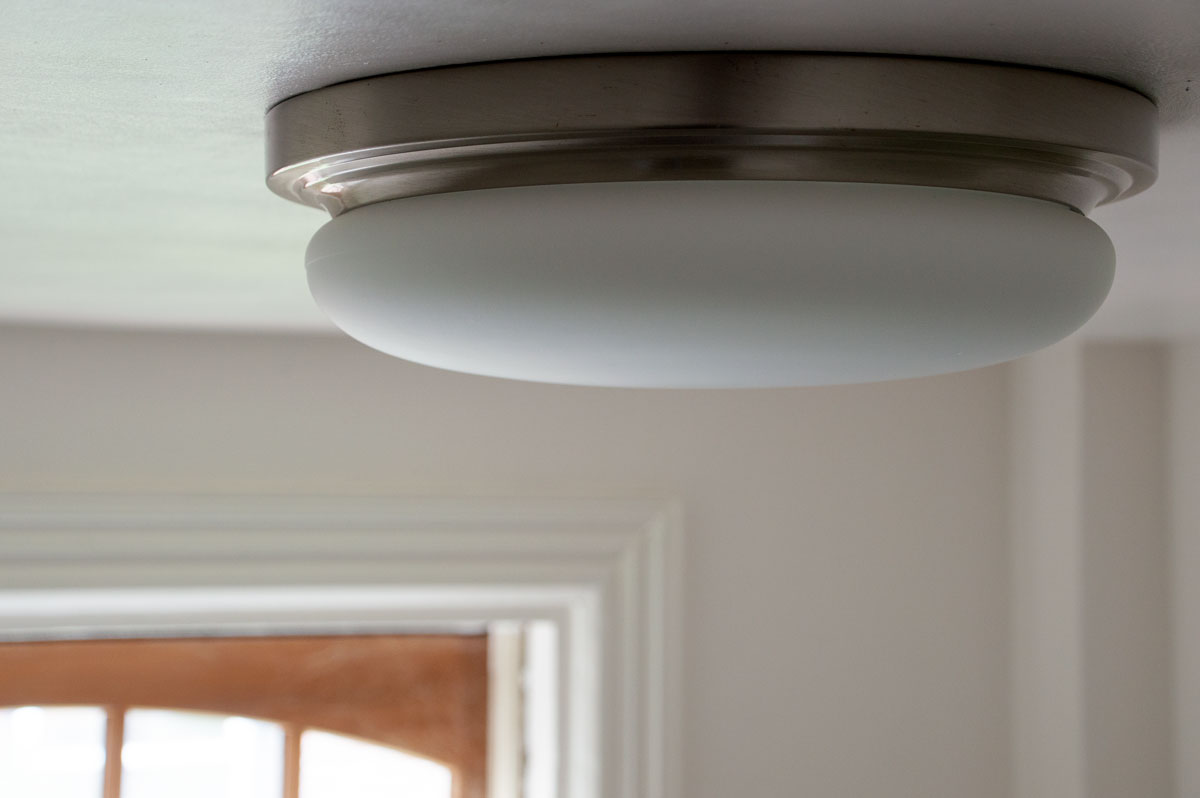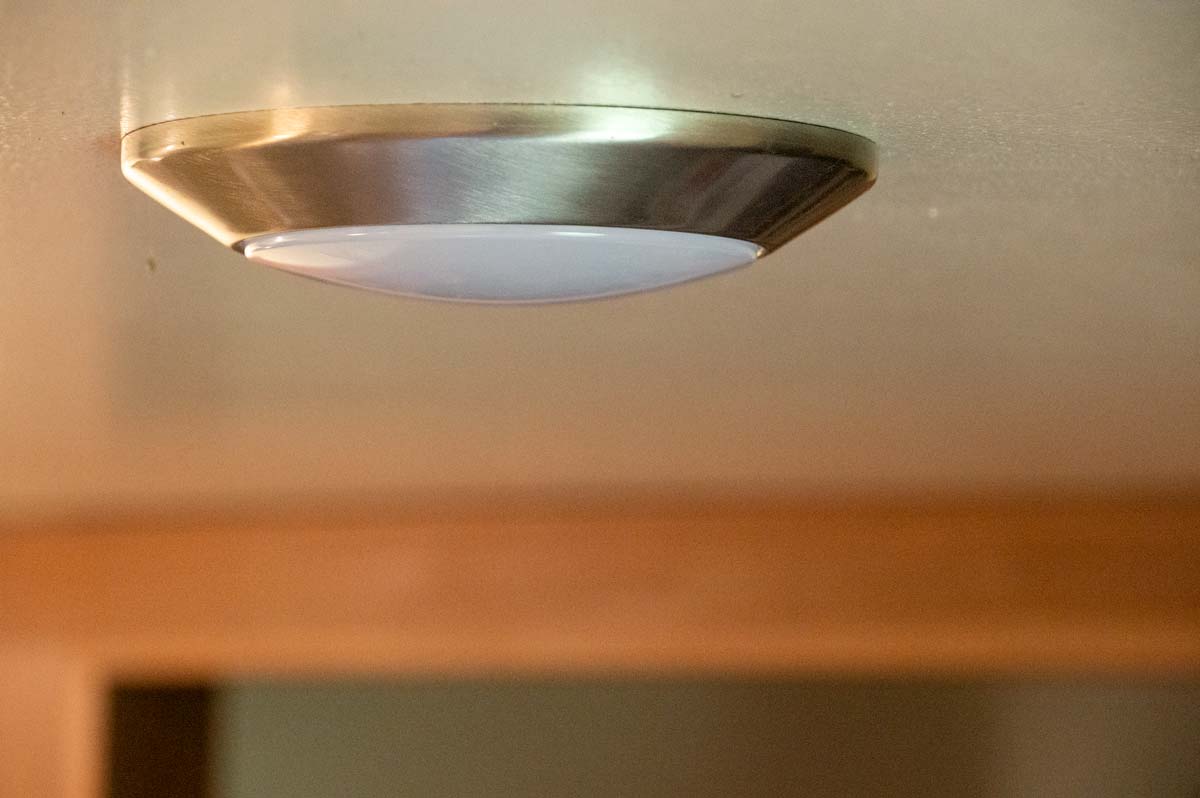Recent articles have covered the clear benefits of replacing old lightbulbs with LEDs and outlined the many options you have when choosing LED bulbs. This article will expand on that last conversation by introducing a relatively new option: replacing your light fixtures with new models with no replaceable bulb at all, so-called “integrated” LEDs.
Integrated LED fixtures have two main advantages and one big downside. Let’s discuss each in turn:
Integrated LED Advantage #1: Lifespan
I wasn’t in the room where it happened, but I can sort of imagine how these fixtures came about. Faced with a new reality in which people will go from changing lightbulbs every year or three, to one in which people are changing lightbulbs every decade or so, a natural question arises: at what point is a lightbulb essentially permanent? One can easily imagine a standard 10,000-hour LED bulb outlasting someone’s residence in a house, or at least the time before they choose to remodel the room that bulb is being used in.
At a certain point, it’s logical to just produce a fixture with built-in LEDs that’s designed to last even longer than typical bulbs—on the order of several decades. A quick survey of integrated fixtures for sale at a big box store generally shows advertised lifespans of 30,000 to 50,000 hours, which translates to about 27 to 46 years at three hours per day. How many people do you know that have lived in the same place for that long?
It’s worth noting that LED bulbs and fixtures haven’t been around long enough to prove these lifespans! But even at a service life of about 50% of what’s advertised, say 15 to 20 years, we’re at a point where the LEDs will arguably last longer than your fixture itself will remain in style. You might sum all of this up as simply “long enough”—though I will argue below that there are some drawbacks to this apparent logic.
Integrated LED Advantage #2: Low Profile
The light-emitting diodes that illuminate LED bulbs are super tiny, and are typically arranged on a flat little circuit board like the one visible in the photo at the top of this article. And as we touched on in that post, the high light output produced by the tiny surface area (think of the flashlight on your phone!) seems to have had some liberating effects on lightbulb and light fixture design. That is, there is simply no reason that LED bulbs or fixtures need to be constrained by shapes and sizes that we inherited from older incandescent and fluorescent technologies.
This is the other key advantage of integrated LEDs: super-flat, or “low profile” light fixtures—like the one in the image at the top of this article—that were previously only possible by having a recess (i.e., a huge hole) in your ceiling to hide your big old lightbulb. These recessed lights, often called “can” lights because of the big metal enclosures they were housed in, have always been notoriously difficult to insulate and air seal—if you even had the space and access to install them at all in a given room. So in addition to opening up design choices not previously available, integrated LEDs mounted to traditional, relatively easily air-sealed electrical boxes can help you achieve additional efficiency benefits if you’re replacing can lights.
The Big Downside of Integrated LEDs
In the three minutes it’s taken you to get to this part of the article, you’ve probably figured out the downside of not having to replace lightbulbs: you literally cannot replace your light “bulbs” in any integrated LED fixture I’ve come across.*
If your light fails prematurely, as sometimes happens with any bulb? You’re left to deal with the manufacturer’s warranty—which is sometimes generous, but is never 27 or 46 years—and having to prove that you didn’t install it incorrectly, or in an inappropriate location.
Want to change your color temperature, or have a brighter or dimmer light? You’re out of luck.
And finally, thinking way ahead: what if the light fixture lasts as long as advertised, and you simply like it and want to keep it? Well, that fixture will almost certainly not be manufactured anymore in three or four decades. It might seem like a stretch to think that far into the future, but think how cool certain vintage lights are now from, say, the 1920s. The ability to replace the bulbs in those fixtures (as well as the ability to rewire them with new lamp cord) is key to their true longevity. Lacking those features, the “vintage” market for integrated LEDs probably won’t exist in the year 2120.
I’m reminded of a line that wasn’t actually in The Hitchhiker’s Guide to the Galaxy (but it’s how I remember it!): The definition of something “unbreakable” is that it’s actually impossible to repair.** As someone who believes that repairability and maintainability are key aspects of sustainability (and just plain living a minimally wasteful life), this aspect of integrated LEDs is a turnoff for me.
Takeaway: Are Integrated LEDs Worth It?
If you’re a regular reader of Green Old Home, you likely enjoy DIY projects enough that “not having to replace lightbulbs” isn’t much of a selling point. That said, there are clearly some situations where integrated LEDs have a role. The integrated LED fixture in the photograph at the top of the article has a low profile that was previously possible only with recessed can lights. However, the giant integrated LED in the photo below has such a large shade that it could easily house several regular LED bulbs mounted sideways, as in a traditional fixture. For that reason, I’m not sure the model below makes a lot of sense as a purchase.

So what’s the point of buying one of the many integrated LED fixtures that are the same size or larger as models that use replaceable bulbs? Aside from the promise of less maintenance, I’d say very little. When you’re already talking about replacing standard LED bulbs every decade or so, there’s really minimal additional advantage to increasing that interval to 20+ years. Perhaps if you’ve got a really inaccessible fixture, say at a cathedral ceiling, you might decide that you don’t want to whip out the 30-foot extension ladder any more often than necessary. Or maybe you’re a landlord who’s trying to cut down on service calls. But again, standard 10,000-hour LED bulbs will do most of that work for you.
I have to say, I feel like I see more and more of these integrated LED fixtures when I visit the big box stores lately. I hope that we’re not seeing a trend away from replaceable bulbs. A cynical person might say that the manufacturers know they’ll make more money selling you whole fixtures than individual bulbs! But more importantly, for the reasons outlined above, I think that integrated LEDs take us in the wrong direction when it comes to creating a less wasteful culture in the long term.
And someday your grandkids will be sad that there are no vintage 2020s light fixtures on the market.
*Anything is possible, of course, with the right know-how in electronics. But for a typical consumer, even a handy consumer, the typical integrated LED fixture is not designed to be rewired with a new light package.
**The actual quote by Douglas Adams is: “The major difference between a thing that might go wrong and a thing that cannot possibly go wrong is that when a thing that cannot possibly go wrong goes wrong it usually turns out to be impossible to get at or repair.”
